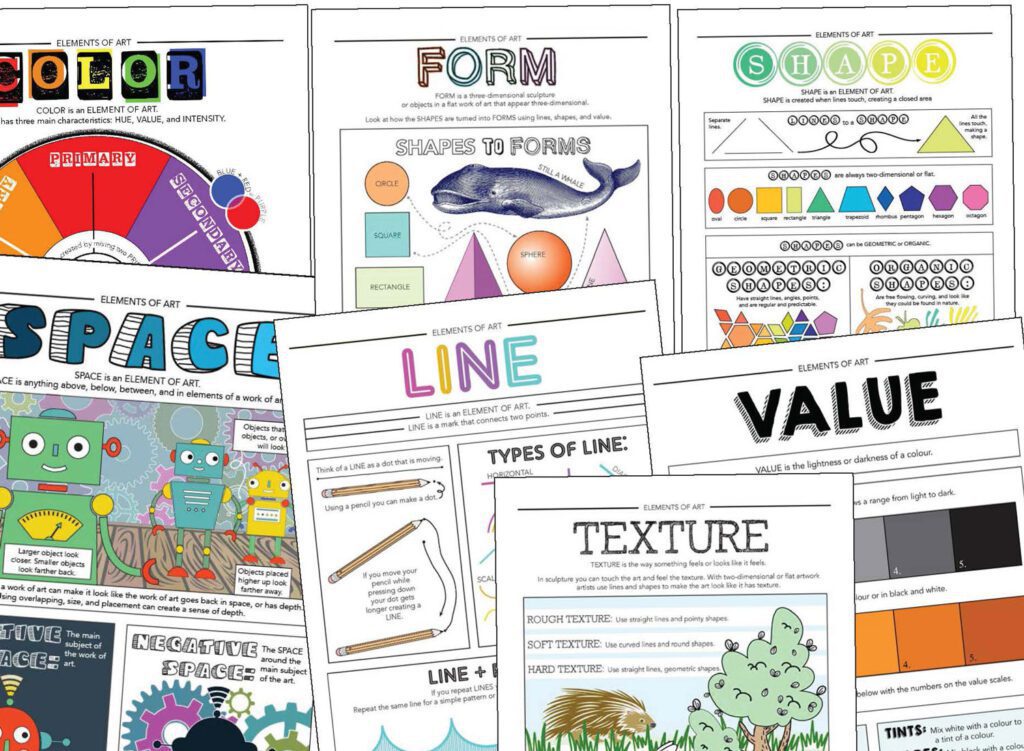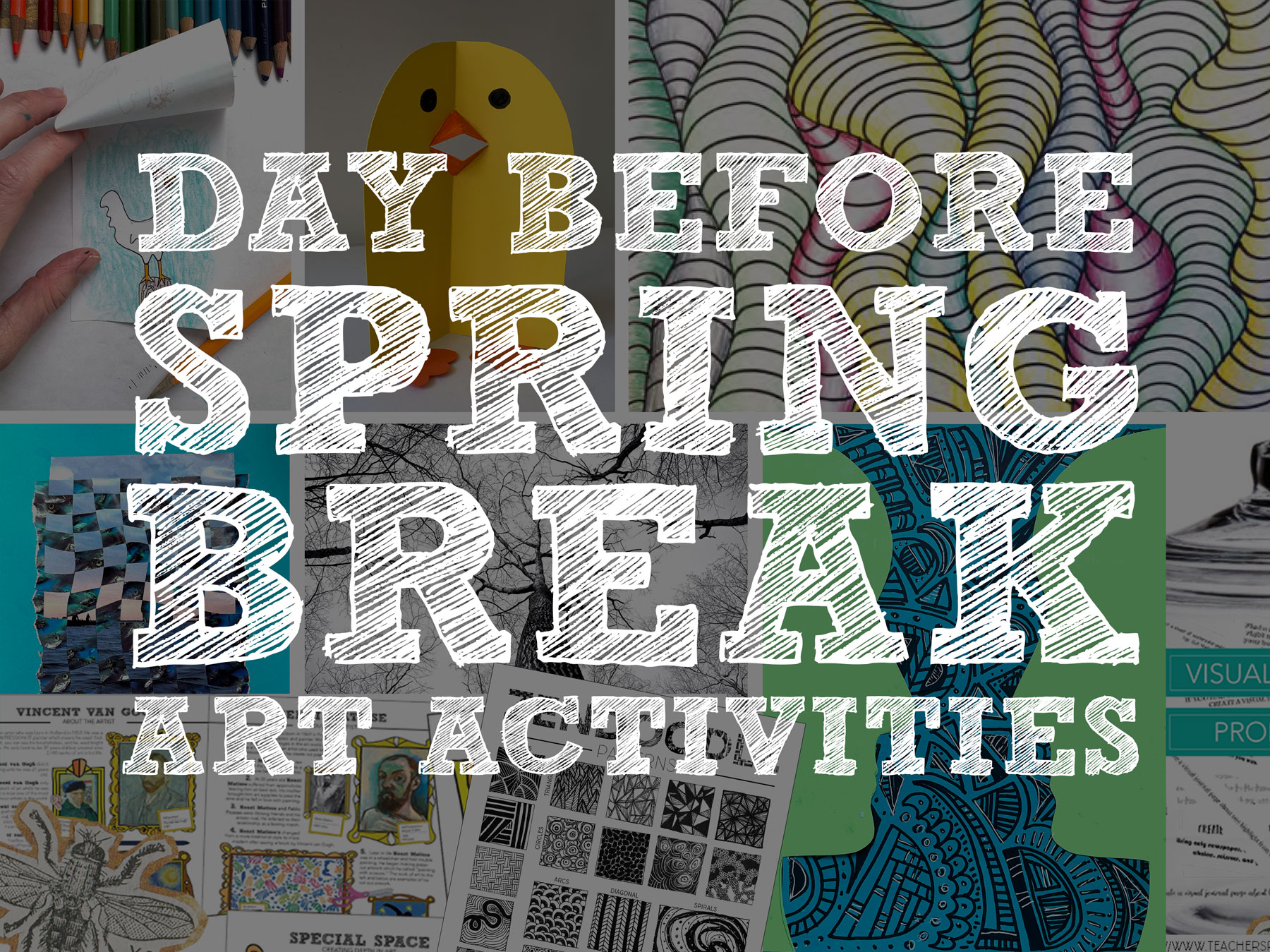
Effective elementary art classroom management is key to creating a productive and enjoyable learning environment. Whether you’re a seasoned teacher or just starting your journey, managing a room full of young artists presents unique challenges, from keeping noise levels down to ensuring students stay on task while expressing their creativity and having fun.
Through this blog post, I will cover everything from setting and enforcing rules, assigning seats, creating helper and supply tables to reducing movement, managing early finishers, and implementing a discipline system that works. My hope is you will find easy-to-implement, actionable ideas to help you better manage your artroom.
Why Elementary Art Classroom Management Matters
Elementary art classrooms are different from traditional classrooms. Students are encouraged to move around, collaborate, and get hands-on with materials. However, this freedom can lead to chaos if not properly managed. Effective elementary art classroom management enables students to explore their creativity, have fun, chat with their neighbors, while also following rules and expectations.
Setting Classroom Rules and Enforcing Them Early
The foundation of a well-managed art classroom is clear, consistent rules. Establishing classroom rules from day one sets the tone for the rest of the year. Students must know what is expected of them in terms of behavior and participation.
How to Create Effective Classroom Rules
Your classroom rules should be:
- Simple: Rules must be easy for young students to understand and remember.
- Relevant: Focus on behaviors that directly impact classroom safety, productivity, and respect.
- Visible: Post them prominently in your classroom. Consider creating posters or PowerPoint slides to display them visually. Students will benefit from frequent reminders.
- Reinforced: Go over the rules regularly, not just on the first day. This helps solidify expectations in students’ minds.
PRO-TIP: A great way to introduce and reinforce the rules is by creating a short, fun video with your students. In this video, they act out the rules in a creative and memorable way. It makes the rules more engaging and keeps you from having to repeat yourself in every class the first week of school.
My Mom is a retired elementary art teacher of 30+ years. Her go-to rules are:
- Walk, don’t run!
- Use inside voices.
- Listen to instructions.
- Clean up after yourself.
- Have fun!
Enforcing Rules Consistently
Enforcement is just as important as setting the rules. Once your expectations are clear, it’s essential to be consistent in holding students accountable. This doesn’t mean being overly strict, but it does require fairness and firmness. Students should understand that the rules are not flexible and apply to everyone equally. When you’re consistent, students understand what to expect.
Assigning Seats: Building Structure from the Start

Assigning seats in an elementary art classroom helps with classroom management and learning student names.
How to Assign Seats Effectively
Before the school year begins, request a class list from the classroom teachers. Use this list to assign seats to students. This is my mom’s go to for seating charts:
- Alternate Seating: Alternating seating between boys and girls when possible. This encourages students to socialize with new peers and cuts down on socializing during work time.
- Alphabetical Seating: Use alphabetical order to help learn names and pass back work.
- Color-Coded Tables: Label each table with a different color. Create matching folders to store student artwork. This helps keep artwork organized and helper students when passing back work.
Assigned seating minimizes socializing between friends and allows students to build new connections. It also speeds up administrative tasks, such as handing out materials or taking attendance.
Using Call and Response to Manage Noise Levels

Art rooms can get noisy, especially when students are excited about their projects. To maintain a productive environment, it’s important to have a reliable method for getting students’ attention. One popular strategy is using call and response.
Why Call and Response Works
Call and response is a fun, interactive way to bring students back to focus without raising your voice. When you call out a phrase, students respond in unison, signaling that they are paying attention. This technique is particularly effective in a room where students are spread out, working independently or in small groups.
My favorite call and response I heard recently at my son’s school is singing the lyric “Don’t go chasing waterfalls,” and having students respond with a “shhhhhh” waterfall sound. If you’re not comfortable singing, try a simple clap-back sequence. Clap twice, and have students clap back once.
Practice this at the beginning of the school year so that students know how to respond when it’s used. Once students understand the routine, it becomes an effective way to quickly regain control without shouting over the noise.
Helper Tables and Supply Tables: Reducing Movement to Increase Focus

In an art classroom, excessive movement can lead to distractions, accidents, and loss of focus. One of the simplest ways to reduce unnecessary movement is by implementing helper tables and supply tables.
Helper Tables
Every week, designate one table as the “helper table.” The students at this table are responsible for distributing and collecting supplies, folders, and other materials. This reduces the amount of movement in the classroom and gives students a sense of responsibility. The helper table rotates weekly, so every student gets a turn.
After introducing the day’s lesson, instruct the helper table to pass out materials. At the end of class, the same table helps with cleanup, ensuring that supplies are returned to the right place. By having only one group move around, you minimize distractions and maintain control of the room.
Supply Tables
A supply table serves as a central location where materials are kept and returned. This reduces the need for students to wander around the room searching for what they need. Instead, the designated helper table can collect the necessary supplies for the day and distribute them to the rest of the class. At the end of the lesson, students either place their artwork on the supply table or in their respective color-coded folders.
By limiting movement through helper and supply tables, you create a more structured, calm environment where students can focus on their art.
Managing Early Finishers: Keeping All Students Engaged

In every art class, there will be students who finish their projects ahead of the rest. These early finishers can become a source of distraction if not kept busy. Having a plan in place to keep them occupied ensures that the classroom remains productive.
Setting Up an Early Finisher Table
Designate a specific area for early finishers, stocked with simple, independent activities. This could be an extra table, a file cabinet, or even a set of drawers.
Some effective early finisher activities include:
- Simple drawing prompts: Offer sheets with fun, creative drawing challenges.
- Coloring sheets or handouts: Handouts that require minimal supplies like crayons or pencils are perfect for this.
Free drawing is also an option, but some students might need additional guidance to stay focused. Having structured activities ready will keep early finishers engaged and reduce disruptions.
Check out early and fast finisher activities on my TPT here and worksheet packs on my website shop here.
Discipline in the Art Room: Using a Simple, Effective System

Discipline is an essential aspect of elementary art classroom management, and it’s important to have a plan in place for addressing misbehavior without disrupting the class. A simple yet effective discipline system can help you address issues calmly and consistently.
The Post-It Note System
Once again and nugget of wisom from my mom is her Post-It note method. Here’s how it works:
- When a student is misbehaving, place a yellow Post-It note on their table as a first warning.
- If the behavior continues, the student must write their name on the note, and you add an “X.” Record this in your gradebook.
- If the behavior persists, add another “X,” note it again, and discuss the issue with the classroom teacher or consider moving the student to an isolated spot.
Think of this system as a “three strikes” approach. After the third strike, the student’s behavior grade is affected, and you may contact parents or involve administration. The Post-It note serves as a non-verbal reminder for the student to correct their behavior, often without needing further escalation.
This approach keeps the focus on learning rather than discipline, ensuring that minor disruptions don’t derail the entire class.
You Can Do It!
Elementary art classroom management is the backbone of an effective art room. By setting clear rules, assigning seats, using call-and-response methods, and incorporating helper and supply tables, you create a structured environment where creativity can flourish. Managing early finishers and having a consistent discipline system in place ensures that the classroom remains calm and productive.
I hope these tips help you feel more confidence in your elementary art classroom management. You can hit the easy button this year and get my first 9-weeks of K-5 art done for you with my drop-in-ready pack. More packs will be coming soon!
Don’t forget to follow me on Instagram and TikTok for weekly visual journal demos and other project ideas. Subscribe here to get freebies, project tutorials, and more straight to your inbox. Until next time!






Leave a Reply